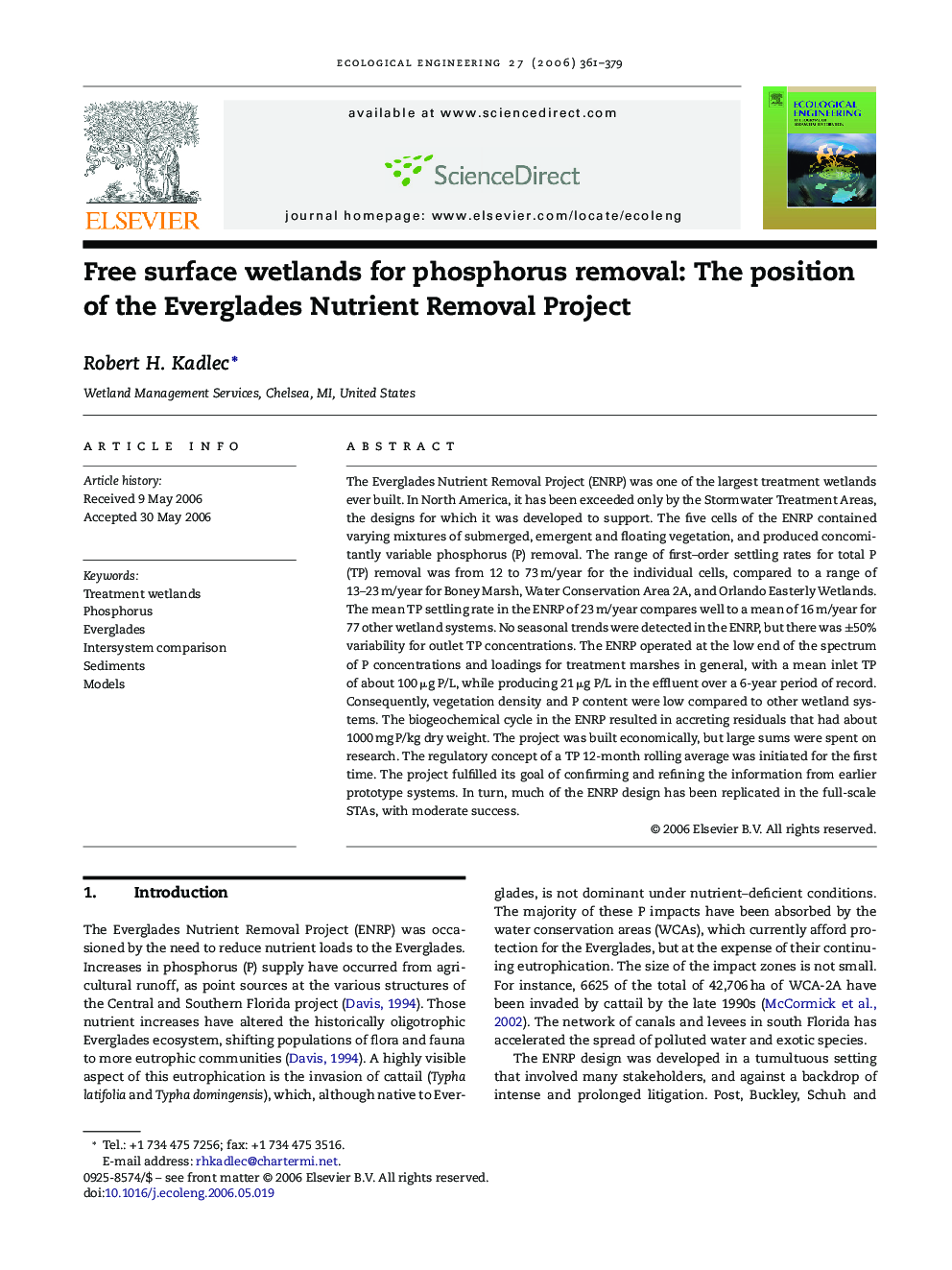| کد مقاله | کد نشریه | سال انتشار | مقاله انگلیسی | نسخه تمام متن |
|---|---|---|---|---|
| 4391239 | 1305221 | 2006 | 19 صفحه PDF | دانلود رایگان |

The Everglades Nutrient Removal Project (ENRP) was one of the largest treatment wetlands ever built. In North America, it has been exceeded only by the Stormwater Treatment Areas, the designs for which it was developed to support. The five cells of the ENRP contained varying mixtures of submerged, emergent and floating vegetation, and produced concomitantly variable phosphorus (P) removal. The range of first–order settling rates for total P (TP) removal was from 12 to 73 m/year for the individual cells, compared to a range of 13–23 m/year for Boney Marsh, Water Conservation Area 2A, and Orlando Easterly Wetlands. The mean TP settling rate in the ENRP of 23 m/year compares well to a mean of 16 m/year for 77 other wetland systems. No seasonal trends were detected in the ENRP, but there was ±50% variability for outlet TP concentrations. The ENRP operated at the low end of the spectrum of P concentrations and loadings for treatment marshes in general, with a mean inlet TP of about 100 μg P/L, while producing 21 μg P/L in the effluent over a 6-year period of record. Consequently, vegetation density and P content were low compared to other wetland systems. The biogeochemical cycle in the ENRP resulted in accreting residuals that had about 1000 mg P/kg dry weight. The project was built economically, but large sums were spent on research. The regulatory concept of a TP 12-month rolling average was initiated for the first time. The project fulfilled its goal of confirming and refining the information from earlier prototype systems. In turn, much of the ENRP design has been replicated in the full-scale STAs, with moderate success.
Journal: Ecological Engineering - Volume 27, Issue 4, 31 October 2006, Pages 361–379